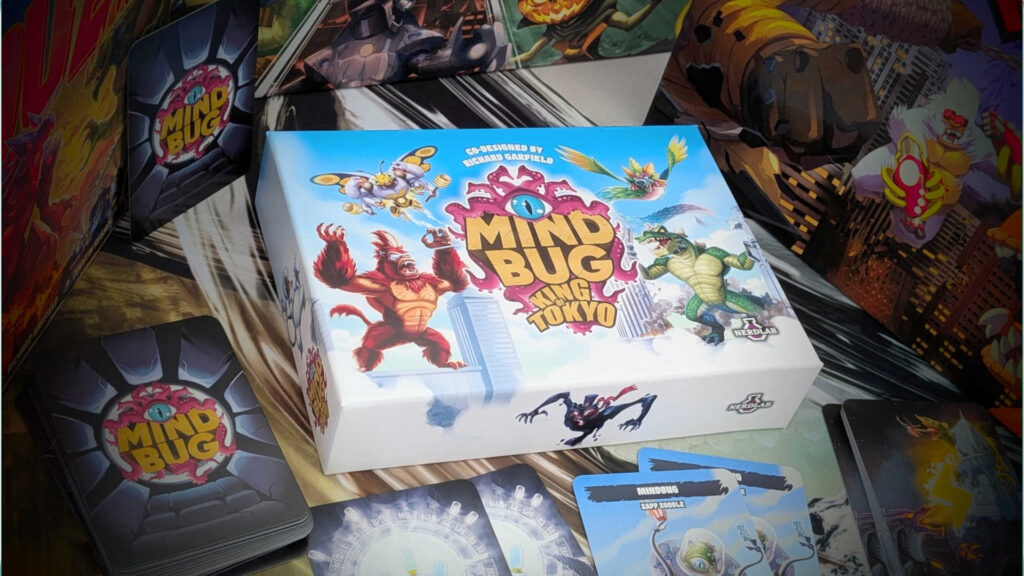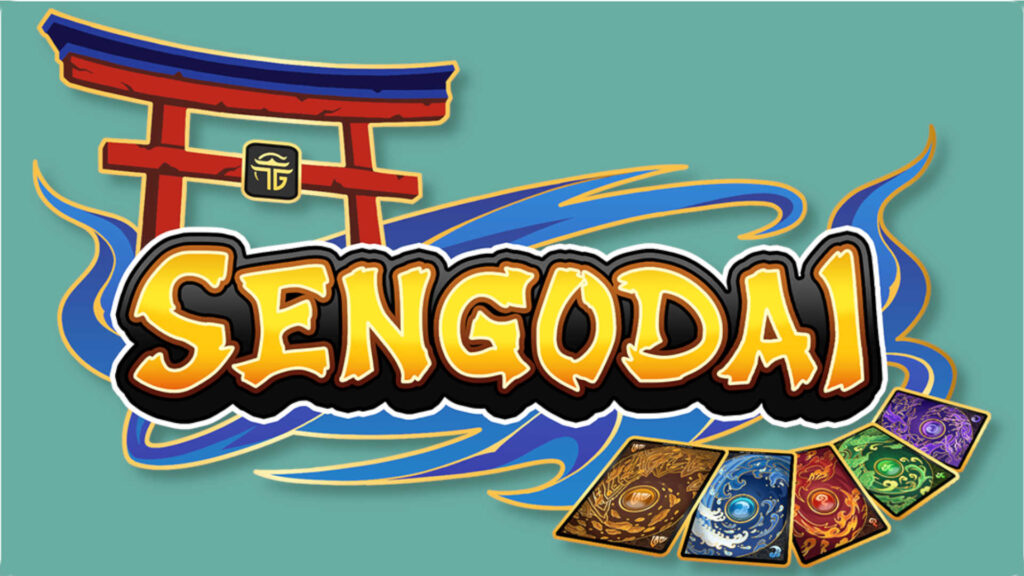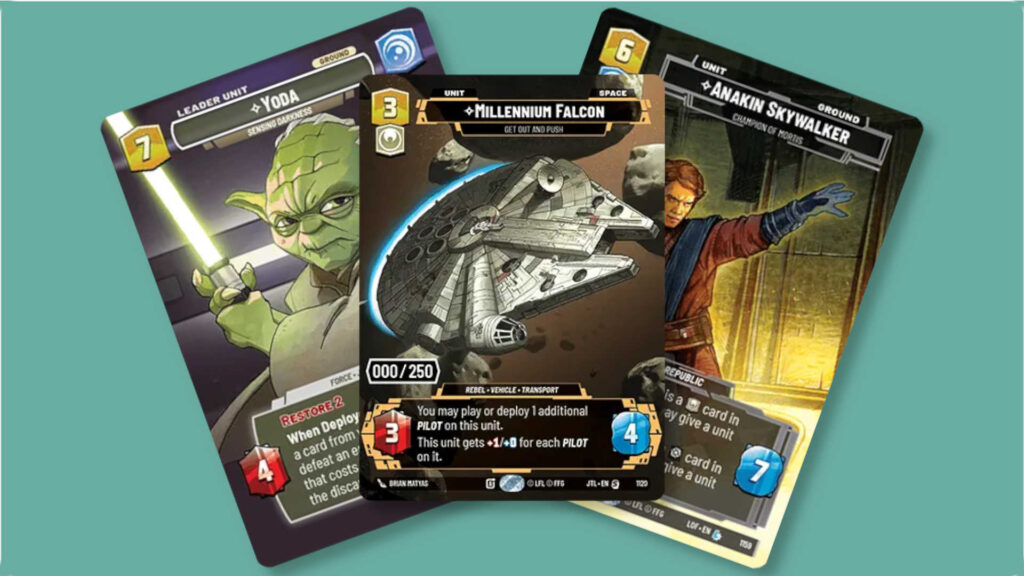Here at Card Gamer, we’re huge fans of the Mindbug games. They’re easy to learn, fast moving card games which fit a wealth of gameplay options and variety into a tiny package, using a surprisingly small selection of components. We’ve also been massive admirers of Magic: The Gathering creator Richard Garfield’s King of Tokyo series of games, and we still have our first edition of the very first game right here at CG Towers! Given that Richard Garfield is involved in the design of both Mindbug and King of Tokyo, it almost seems like it was only a matter of time before the two series merged in some way, and that’s what we have here, with Mindbug x King of Tokyo. Let’s check it out!
Table of Contents
ToggleWhat is Mindbug x King of Tokyo?

It would have been very easy for Nerdlab Games to simply reskin Mindbug with the kaiju from King of Tokyo, King of New York, King of Monster Island and the various expansions for each game in the series, then call it a day. Yet Mindbug x King of Tokyo goes way further than you may expect. It brings not just the kaiju characters into Mindbug, but also drops the energy cubes, power cards and even the familiar dice from King of Tokyo into the mix. So what you have here is the full gameplay of Mindbug, fused like a Frankenstein’s kaiju with King of Tokyo’s mechanics.
How to Play Mindbug x King of Tokyo
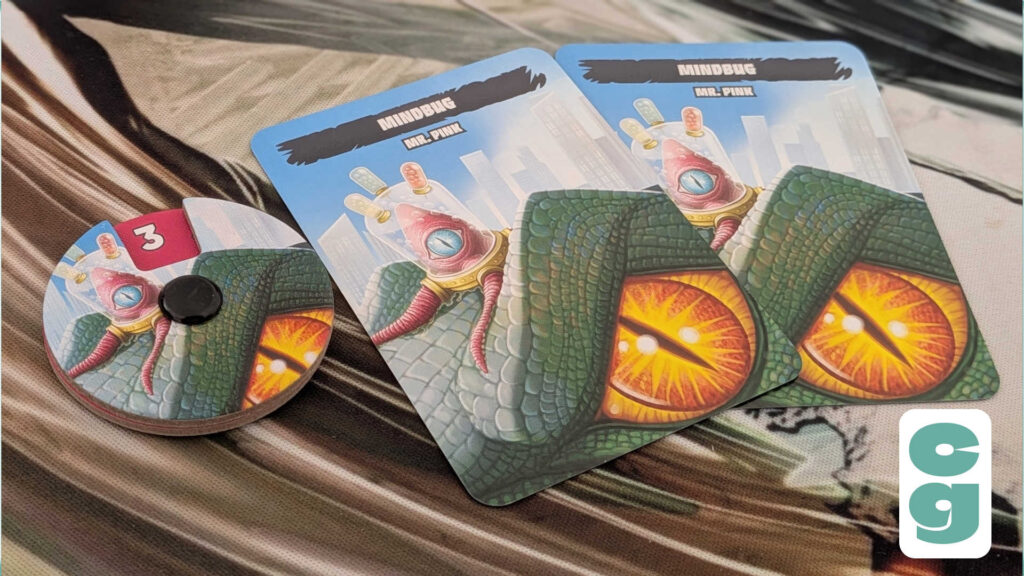
Going back to that familiarity, the setup of Mindbug x King of Tokyo is exactly the same as other versions of Mindbug, albeit with a few additions. So you’ll still deal each player a deck of 10 creature cards to draw from, you’ll draw 5 cards from your deck to form your opening hand, you’ll still have two Mindbug cards each to use during the game, and you’ll also have your life counter dial set to 3 at the game’s outset.
Except you’ll also deal three Power cards face up on the table next to the power card deck, and ready the supply of transparent green Energy cubes, with which you’ll buy power cards over the course of the game. For those players who have only played Mindbug, this mechanic has been lifted straight from King of Tokyo, almost untouched, and dropped into Mindbug.

Each turn, players will either play a creature card from their hand or attack with a single creature. If a player can’t take either of those actions on their turn, they lose the game immediately. Otherwise, a player wins if they reduce the opposing player to zero life points.
When playing a creature, it’s first placed so the opponent can read its keyword(s) and stats, and they then get a chance to use a Mindbug in order to take control of it and place it immediately in their play area. The active player then plays another card from their hand (having drawn back up to a hand of 5 cards immediately after playing their creature), and if the opposing player still has a Mindbug, they can seize control of the new creature in the same way too, with the active player once more repeating the process. This can only happen twice to each player per game, as once each of a player’s two Mindbugs is used, they cannot be used again. Some cards have effects which trigger when the card is played too, or even passive effects which always apply when the card is in play.
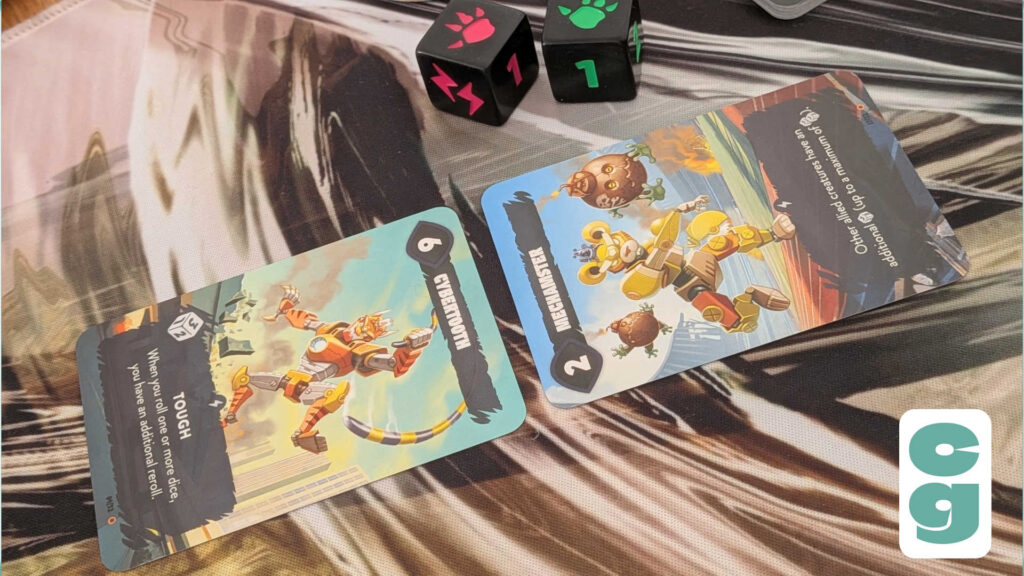
Attacking is very straightforward; the active player declares the attack, and the opposing player chooses whether to block or not. If they don’t use a creature to block the attack, they lose 1 life. If they block, they choose which of their creatures in play will block the attack. Generally, the power value on the top right of each creature card is compared, the highest one wins and the loser is sent to its owner’s discard pile.
However, there are numerous keywords which can add quite a bit of variation to how combat plays out. Hunter, for example, will allow its player to force a specific opposing creature to block its attack, Frenzy allows a creature to attack twice, providing they survive the outcome of their first attack. Sneaky can only be blocked by a creature which also has the Sneaky keyword, Poisonous always defeats the enemy creature whether or not they win the battle, and Tough creatures can take two hits instead of one (their card is turned 90 degrees to show when they’ve taken their first point of damage).

Some cards also have abilities which trigger when they’re defeated. So far, so Mindbug, right? In Mindbug x King of Tokyo, some cards have a die roll icon; this can have either one or two dice symbols. This means that, when they attack, their owning player rolls one or two of the special dice and follows the effects. A result of 1, 2 or 3 adds the respective amount of power to the attack. A roll of one or two energy symbols gives the player the relevant number of energy cubes. A stomp symbol forces the opponent to discard a card from their hand. Then combat proceeds as normal. Being able to reroll your initial result is another element that’s been fused into Mindbug from King of Tokyo too!
Power cards can be purchased for their energy cube cost at the start of a turn before any actions are taken by the active player; they may buy any of the face up cards, replace it with another card drawn from the deck and immediately resolve the effect of the purchased card, Players may buy as many cards as they wish in this way, as long as they have energy cubes to pay for them, and this must take place prior to their usual turn action being taken.
Is Mindbug x King of Tokyo Fun to Play?
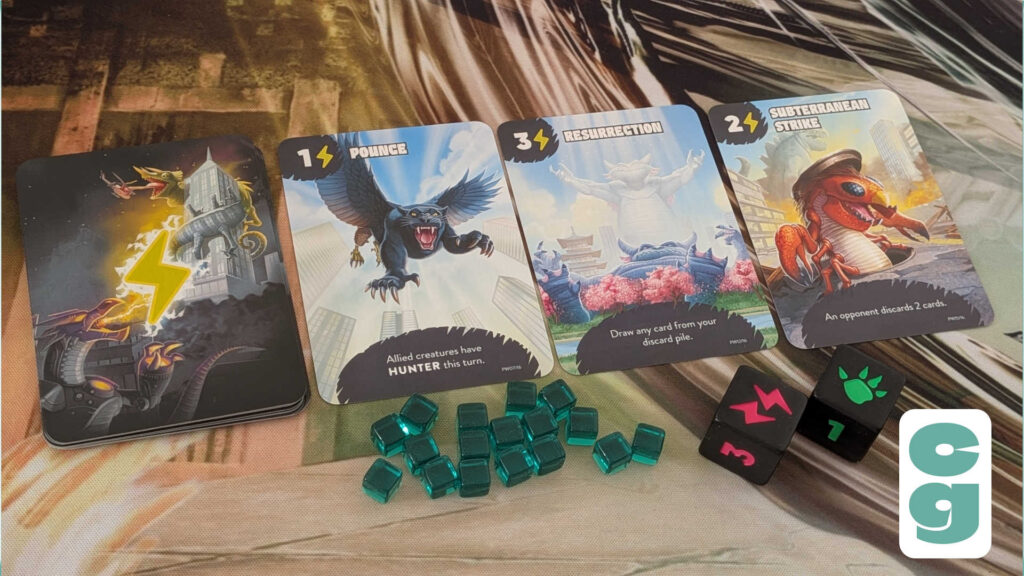
The coolest thing about Mindbug x King of Tokyo is how much it it incorporates from King of Tokyo, while still feeling exactly like Mindbug. Beyond the aesthetic, which again feels like Mindbug while using the King of Tokyo monsters and thematic power cards, the dice add a further layer of excitement and a dash of luck to the game which can be pretty thrilling.
We were really impressed with how well integrated the additional mechanics are without overcomplicating or even messing with the Mindbug formula, which has always been incredibly addictive due to its accessibility, along with the fact that its simplicity doesn’t sacrifice meaningful gameplay choices. It does feel as if fans of either game series can feel right at home pretty much immediately, which is an impressive trick to pull off when essentially combining two games into one.

It is still Mindbug with the King of Tokyo elements added, rather than a King of Tokyo game overall. Interestingly, there’s a Mindbug expansion for King of Tokyo which pulls the reverse trick, adding the Mindbug to the selection of monsters you can play as in the King of Tokyo games (King of Tokyo: Mindbug Expansion), but note that it’s an expansion and not a standalone game.
Mindbug x King of Tokyo’s cards and other elements can be used with other Mindbug games, though I’d urge caution on that given how well tuned its selection of cards is, and how unique the King of Tokyo elements are in relation to prior Mindbug games. As a huge fan of both Mindbug and King of Tokyo though, Mindbug x King of Tokyo does everything right, providing an experience that’s satisfying for fans of either series, or even players unfamiliar with both.
The Card Gamer Verdict
Both the Mindbug and King of Tokyo games are built on an incredibly strong set of basic, accessible mechanics; and Mindbug x King of Tokyo does an amazing job of bringing both titles together without overcomplicating the basic formula of Mindbug.
With the dice and power cards added, Mindbug x King of Tokyo is slightly less beginner-friendly than the original Mindbug, but it still feels easy enough for newcomers to enjoy.
Importantly, Mindbug x King of Tokyo still punches well above its weight in terms of the gameplay it packs into such a small box, and this version retains Mindbug’s status as one of the best two-player card games we’ve ever played. Fans of either series will find plenty to enjoy in Mindbug x King of Tokyo, and newcomers to Mindbug will still have a monstrously good time.


